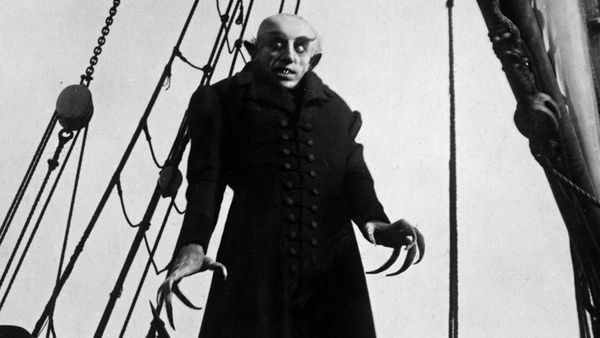Eye For Film >> Movies >> Nosferatu (1922) Film Review
Nosferatu
Reviewed by: Keith Hennessey Brown

Estate agent Hutter travels from his home town in Germany to the wilds of Transylvania to conduct business with the mysterious Count Orlok, who purchases a house in Bremen and travels west, bringing plague and fear.
Hutter's wife, Mina, discovers that she can save the town from the vampire by keeping him at her side until cockcrow, when he will dissolve into dust.

Nosferatu is, then, basically a free adaptation of Bram Stoker's novel, Dracula, names being changed in an attempt to avoid having to pay the author's widow. She found out about what was going on, sued its producers and distributors, and won. In 1925, all copies of the print were ordered to be destroyed. Fortunately for us, one survived.
Thus, Nosferatu has continued, deservedly, to exert a considerable influence on filmmakers into the present, as demonstrated by last year's Shadow Of The Vampire.
The movie's two main strengths are Max Schreck's compelling performance, as the eerily inhuman vampire, and Murnau's unparallelled ability to blend naturalistic and expressionistic elements. Thanks to them, the modern viewer is able to overlook some of the film's more awkward moments, such as Gustav Von Wangenheim's horribly mannered performance, or Murnau's quaintly comic use of accelerated motion to suggest the vampire's unnatural speed.
Reviewed on: 09 Feb 2002

















